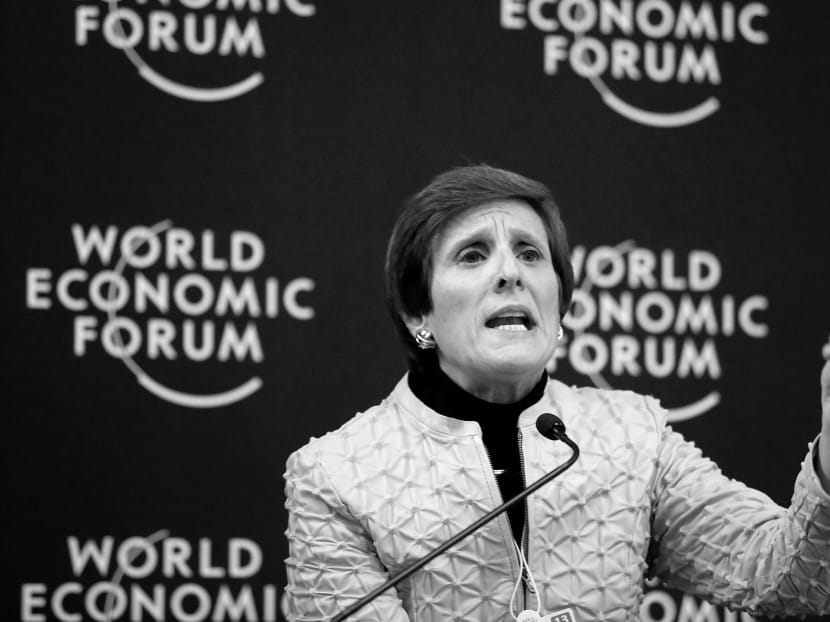Why women CEOs get fired more often
The consulting company Strategy& (formerly Booz & Co) has found, after a study of corporate leadership transitions, that female chief executives get forced out of office more often than men.




The consulting company Strategy& (formerly Booz & Co) has found, after a study of corporate leadership transitions, that female chief executives get forced out of office more often than men.
To be exact: Over the past 10 years, 38 per cent of female chief executives of the world’s 2,500 biggest public companies were fired, compared with 27 per cent of their male counterparts.
GLASS CLIFF THEORY AND SAVIOUR EFFECT
This is not evidence of male superiority on the job, but of the so-called glass cliff theory.
According to this theory, women and other “occupational minorities”, such as those with a different skin colour, tend to get appointed to top jobs when a company needs saving.
When these women fail — and in a crisis, the probability of failure is higher — boardrooms fall back on tradition. They replace the women with white men who have lots of industry experience.
Ms Alison Cook and Ms Christy Glass, the authors of another recent paper that studied Fortune 500 CEO transitions from 1996 to 2010, call this “the saviour effect”. Their research found that companies showing diminished returns on equity and assets were more likely to put women and minorities in the top job.
“Glass cliff” hires are prominent among the 23 female chief executives who run Fortune 500 companies: Ms Marissa Mayer at Yahoo!, Ms Meg Whitman at Hewlett-Packard, Ms Mary Barra at General Motors and Ms Irene Rosenfeld at Mondelez (formerly Kraft).
They were appointed to effect breakthroughs and turnarounds. In many such situations (Ms Barra is an exception), female chief executives are brought in from outside the company. Strategy& confirms that 35 per cent of incoming female CEOs are outsiders, versus 22 per cent for men. Women reaching the top also tend to have had a more varied professional experience than men in similar positions.
Dr Terrance Fitzsimmons of Australia’s University of Queensland conducted in-depth interviews with male and female chief executives to compare their backgrounds and career paths for an article published last year in the Leadership Quarterly journal. He noticed that the interviews with women ran, on average, 22 minutes longer. Forget sexist stereotypes of women being chattier than men: The interview subjects were all precise, to the point and pressed for time.
“Female respondents held far more positions in their careers and had moved outside their initial industry many more times than their male counterparts,” Dr Fitzsimmons found.
He also noted that women tended to spend more time talking about their families: Despite their successful careers, they still shouldered most of the responsibility for their children and domestic matters.
STARTING YOUNG
Women who reach corporate heights tend to have started their training as crisis managers at an early age, said Dr Fitzsimmons.
“Nearly all of the female respondents experienced one of the following: A forced international move; the death or serious illness of parents, siblings or close relatives; domestic violence or serious marital instability; or an estrangement from their parents before the age of sixteen”.
Male CEOs typically looked back on more sheltered, idyllic childhoods, said the researcher.
By their mid-40s, women who have learned to take responsibility at an early age, travelled the corporate jungles extensively and managed to stay focused on their families in the process are, to say the least, competent in a crisis.
The corporate world is still hidebound. Strategy& says 80 per cent of newly appointed CEOs in 2013 were from the same country that housed the companies’ head offices and 65 per cent had never worked in a different region.
Women are treated as exotic outsiders, brought to the helm when board members are feeling adventurous (mainly out of necessity). They have to prove their worth in situations that powerful men suspect may be hopeless.
It is thanks to those who succeed that the percentage of women in top jobs keeps growing slowly but inexorably. Strategy& predicts that by 2040, women will make up one-third of newly appointed CEOs, compared with just 3 per cent in 2013.
So what if failures are frequent, too? BLOOMBERG






